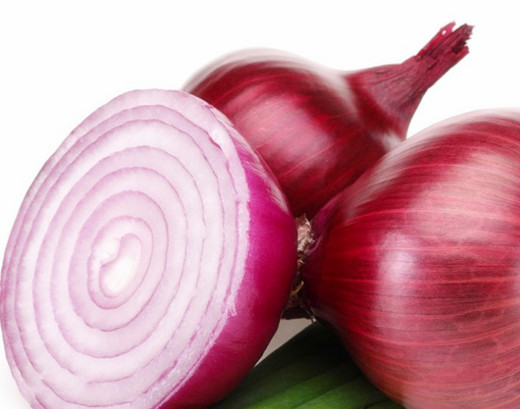The main pests of poplars in Yangshuo County in our province are Yangzhou saccharum moth, Yangxiaohou moth, Yangbaixia moth, Yangliuxiaoxuan moth, Huangxiehui moth, Yangxue moth, Liuxue moth, Yanghuang yellow leaf worm, Huangjiye Yeye ye, Yang Bian. Horned bee, aspen leaf A, Yang Shaoye A, spring feet, beetles and so on. According to the principle of “prevention first, scientific prevention and control, and governance and promotion of health in accordance with the law†and the principle of protecting the ecological environment, we must adhere to the principle of forest management and the prevention and control of pesticides. Physical and chemical methods should be used to reduce the density of insect populations. , Squeezing the area where insects occur. In the area where mild insect pests occur, the dynamic monitoring of pest populations should be strengthened to protect natural enemies and improve the ecological environment. In areas of moderate and severe insect pests, comprehensive control measures based on biological control shall be adopted. Biological agents and biomimetic agents are preferred to reduce the density of insect populations, and then increase the number of natural enemies to achieve biological control of insect population density. When pests are particularly serious and large-scale outbreaks occur, prevention and control should be carried out in time through methods such as aircraft control, ground spraying, and hole injection. Physical control During the summer of pests, organizing people to plow the soil or collect underground deciduous trees can reduce the number of pests in over-summer pests. According to the characteristics of most of the pests' concentrated egg production, the larvae of the first instar larvae, or the crusts and maggots of the mature larvae, human eggs can be removed, insects or moths can be organized to reduce the number of pests. Depending on the habit of drooping drooping larvae after larvae, the fallen larvae can be killed by shaking the trunk. In the adult emergence period, using the phototaxis of pests, hanging black light between forests or igniting the fire at the forest edge traps and kills adults. 1 ç› Ordinary black light can control an area of ​​about 1 mu, multi-light control when the distance between the two lights is not less than 100 meters, hanging lights time is generally from 7 pm to 3 am. When igniting a fire pile to trap adult worms, care should be taken not to burn trees or cause a fire. For pests that need to crawl on the trees to lay their eggs, such as spring owls, they can bind plastic wraps on the trunks before adult eclosion to prevent adults from laying eggs. Spraying, dusting, puffing, or fuming prevention For young and middle-aged trees with a height of 12 meters or less, biopharmaceuticals and bionic preparations can be sprayed on a backpack-type motorized sprayer before the 3rd instar larval stage. Pharmaceutics can choose Bt preparation 20 billion international units, avermectin 6000-8000 times, 25% diflubenzuron III 2000 times, 1.2% diphtheriae EC 1000-2000 times, 3% hypertonic phenoxycarb 3000 to 4000 times liquid and so on. Avoid the use of highly toxic and high-residue agents that kill natural enemies, pollute the environment, and are unsafe for humans and animals. For forests and forests with a certain degree of canopy closure, knapsack-type motorized powder sprayers can be used to spray and control the powder of desencroline or deltamethrin. The amount of powder per acre is 0.5 to 1 kg. It is also possible to use smoke sprayer to spray or spray the emulsifiable or emulsifiable oils or oils, which have a contact ratio of 1:10. Or use lindane smoke agent or enemy horse smoke agent to control smoke, the amount of smoke agent is 1 kg per mu. Spray aerosol control should be performed in the morning or in the evening when there is a breeze. Irrespective of the type of control, the application should be uniform, prevent leakage, and pay attention to the individual safety of the applicator. Aircraft prevention and control Planned forests, forests, etc. where insect pests occur in large areas should be controlled by aircraft in order to achieve rapid pest control. For ultra-low-volume aircraft, 40 grams of 25% diflubenzuron III per acre or 30 grams of avironylzuron, 30% hypertonic phenoxy is recommended for flat forests and forest forests. Granville 30 grams. For forests with complex forest types and high buildings, low-flying aircraft can also be used to prevent and control 25 grams of diflubenzuron III per acre, or 25 grams of avironylzuron, and 3% hypertonic phenoxycarb 25 Grams. For helicopters with an area less than 100,000 mu, helicopters are recommended for prevention and control; for airplanes with more than 100,000 mu, it is recommended that the aircraft be used for prevention and control. Application of poisonous ring prevention and control of tree habits or local occurrence of pests after winter, the agent can be applied to the trunk of the trunk diameter of the breast to prevent and cure. Before the larvae are planted on the tree, 10 ml of 2.5% deltamethrin, 10 ml of omethoate and 1 kg of waste oil are mixed, and a 3 to 5 cm wide ring can be coated on the trunk. Puncture and injection of drugs to prevent localized pests and difficult spraying of tall trees, can be punched at the base of the trunk injection drug control. Through the transpiration of the trees, the liquid medicine is sent to the leaves, so that the pests will die after eating and reach the goal of killing insects. Drill 3-4 holes in different directions of the base of the trunk with a hole injection machine or hand drill, and inject 10% imidacloprid EC with strong conductivity, or 40% omethoate EC, 50% A Amine-phosphorus EC, 25% insecticidal double water agent. Normally, the body weight of a tree with a DBH of 10 cm is 2 to 4 ml. After injection, pay attention to sealing the injection port. In order to improve the control effect, it can be used as a group for every two people, one for drilling, one for injection and sealing. A forest with a large area of ​​biological control can be used to control Trichogramma bengalensis and Trichogramma dendrolimi at the initial stage of egg laying, and 4 bees are placed per acre. When the pests are harmful, the dead insects are collected to prepare crude virus extracts, which are diluted to 3000 to 5000 times and sprayed to prevent and treat third and fourth instar larvae. Live worms can also be used to replicate granulosomal viruses and then formulated into spray formulations. In terms of the protection and utilization of natural enemies, nectar-plants can be planted at forest margins to attract natural enemies to spawn in the forest to increase the reproductive power of natural enemies. Bird nests can also be hung in forests to attract birds to forests, increasing the number of birds in the forest. Forest management and prevention of forestation measures are the fundamental ways to control poplar tree-eating pests. First of all, we must vigorously promote appropriate trees and use local tree species to create mixed forests. Optional tree species such as paulownia, acacia, acacia, citron, acacia, eucalyptus, etc., and economic tree species such as jujube, apple, pear, etc., may be mixed with a poplar tree or isolated in bands. The seedlings used for afforestation are selected from a strong insect-resistant seed breed. seedling. Secondly, it will actively carry out the transformation of pure forests, combine thinning with thinning, adjust the structure of tree species, and replace tree species that are strong in insect resistance. The third is to create a pest isolation belt. The flying ability of adult moths such as C. sibirica is about 200 meters. Therefore, it is suggested that the distance between forests and nets should not be less than 200, or a distance should be set 200 meters away from the forest or forest. The width of the isolation zone is determined according to the specific conditions, but Under normal circumstances should not be less than 10 meters. The fourth is to strengthen tending management, timely cultivating, loosening soil, weeding, and fertilizing, and pruning and nurturing in appropriate seasons to increase tree vigor. Only by gradually creating an environment conducive to the growth of trees and the survival of pests and pests, and constantly improving the forest's ability to resist pests and diseases, can we achieve sustainable disaster prevention. (Speaking expert: Senior Engineer of the Provincial Forest Pest Management and Quarantine Station)
There are 2 types of Red Onion ,round shape and long shape.Onion is lily, allium, and biennial herbaceous plant. The product organ is a round (ball, oval or ellipse) bulb consisting of fleshy scales and scale buds, aliased onion, onion, etc.Onions are red, yellow and white, red onion is flat and round, the skin is purple, the meat is white and slightly purple, tastes sweet, good quality, and high yield; the yellow onions are ripe, the meat is fine, the sweetness is heavy, the quality is excellent, and the quality is good : Preserved; white onions are early mature, short growth period, can be listed in advance. It is better for onions to be flesh-filled, with plenty of individual, close cohesion, no heart, no bolting, no rain, and no frost.We also supplied Fresh Ginger ,Air Dried Ginger , Fresh Garlic , White Garlic ,red garlic. Fresh Chestnut , Sweet Corn , Fresh Taro , Fresh Potato ,Holland Potato. Fresh Baby Mandarin, Fresh Red Grape, Fresh Pomelo , Fresh Ya Pear Chaotian Chili , Paprika Powder , Fresh Apple and so on.


Red Onion
Red Onion,Raw Onion,Fresh Red Onion,Red Dried Fresh
Jining Fuyuan Fruits And Vegetables Co., Ltd. , http://www.fuyuanfv.com

